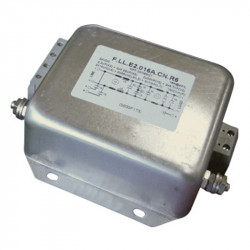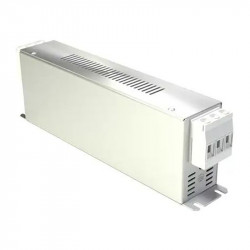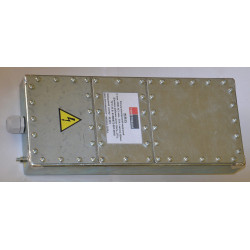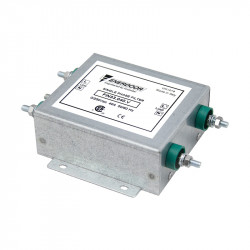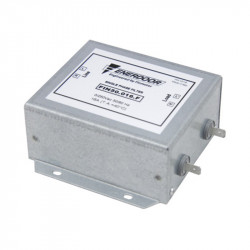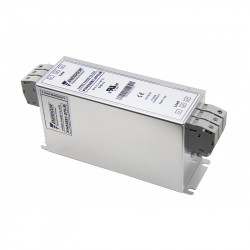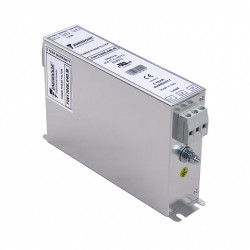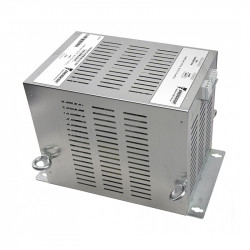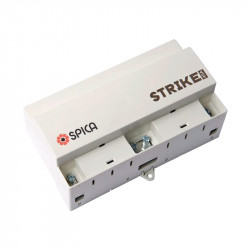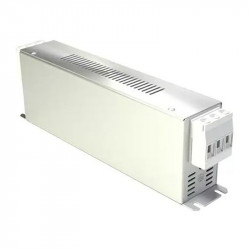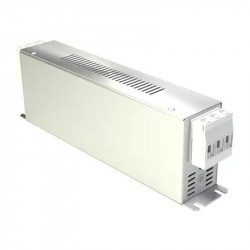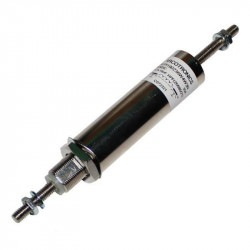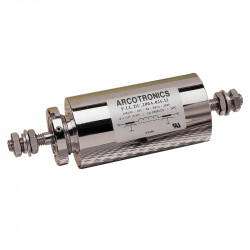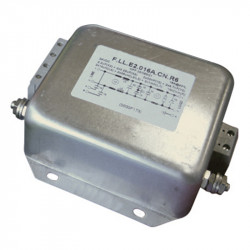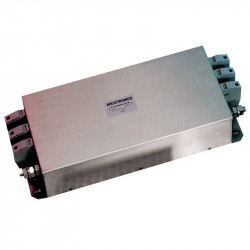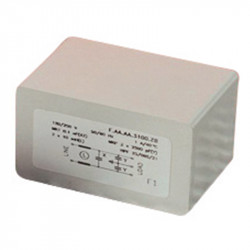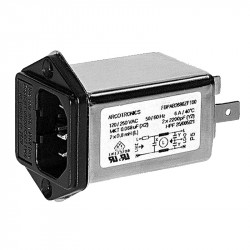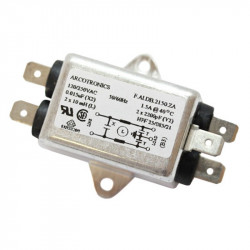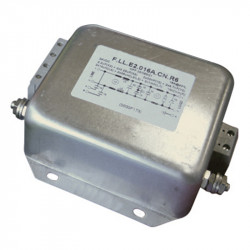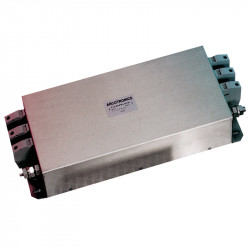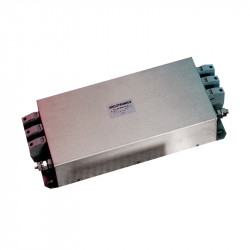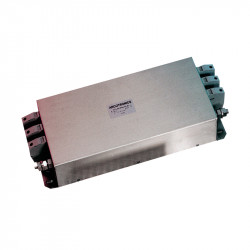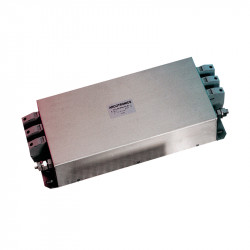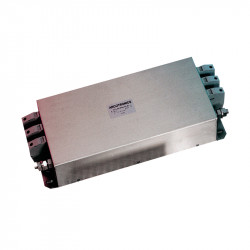Musíte být přihlášen
EMI filtry
Kategorie
Elektromagnetické rušení je prakticky generováno všemi elektronickými zařízeními, jejichž činnost je založena na vysokofrekvenčním spínání. Frekvence spínání se pohybuje od několika desítek Hz do několika MHz. Vysokofrekvenční harmonické proudu negativně ovlivňují další přijímače připojené ke stejné napájecí síti. Mohou způsobit přehřátí napájecích kabelů a transformátorů, přehřátí kondenzátorů v kompenzačních bateriích jalového výkonu a nesprávnou funkci jističů. Šíření rušení do 10 MHz probíhá vedením, nad 30 MHz zářením. Mezi 10 MHz a 30 MHz jsou přítomny oba způsoby šíření rušení.
RFI filtry rušení
Pro omezení tohoto nežádoucího jevu se používají RFI filtry rušení. Filtry účinně potlačují vysokofrekvenční harmonické v rozsahu 100 Hz – 30 MHz. U signálů nad 10 MHz významně ovlivňuje účinnost filtru způsob montáže, typ a uspořádání kabelů. Filtry jsou určeny pro použití s invertory, spínanými zdroji, měniči, lékařskou technikou, počítači.
Sítové filtry rušení se vyrábějí s jmenovitými proudy od 0,5 A do 1200 A, jednofázové nebo třífázové. Třífázové filtry jsou dostupné bez neutrálního vodiče (L1, L2, L3 + PE) a s neutrálním vodičem (L1, L2, L3, N + PE).
Existují také propustné filtry, používané v armádní, lékařské, telekomunikační technice atd. Tyto filtry se doporučují pro systémy s mnoha vstupy a výstupy, protože jsou levnější než specializované vícekanálové filtry.
Technické parametry charakterizující filtr rušení
- potlačení rušení (útlum) – parametr popisující účinnost filtrace.
- únikový proud – velmi důležitý parametr u RFI filtrů. Tento proud vzniká v důsledku parazitních kapacit a kapacity CY mezi napájecími vodiči a skříní (ochranný vodič PE). Hodnota závisí na součtu kapacit CY.
- klimatická kategorie – popisuje podmínky provozu zařízení. Parametr je určen podle norem DIN40040 nebo IEC68.
- pracovní proud při teplotách nad 40ºC – proud procházející filtrem závisí na teplotě okolí. Jmenovitý proud může procházet filtrem do 40ºC. Nad touto teplotou musí být proud nižší než jmenovitý a dosáhnout nuly při maximální teplotě klimatické kategorie (obvykle 85ºC u filtrů).
Jak funguje EMI/RF filtr?
EMI (elektromagnetické rušení) a RFI (rádiofrekvenční rušení) jsou typy rušení, které mohou negativně ovlivnit provoz elektronických zařízení. Filtry rušení tento problém řeší zlepšením výkonu a stability systémů. Účinně potlačují elektromagnetické a rádiofrekvenční rušení.
Sítové filtry rušení jsou určeny k použití v napájecích sítích. Nejprve chrání zařízení před rušením přicházejícím ze zdroje napájení. Dále efektivně chrání před šumem generovaným samotnými zařízeními.
EMI/RF filtr funguje tak, že potlačuje vysoké frekvence a propouští nízké frekvence. Obvykle se skládá z cívky, která potlačuje rušení, kondenzátoru, který rušení odvádí nebo neutralizuje, a feritového jádra, které zvyšuje účinnost filtru.
RFI/EMI filtry využívají induktivní efekt. Cívky vytvářejí odpor, který blokuje elektromagnetický šum, aniž by ovlivnily průchod nízkofrekvenčního proudu.
Jaké efekty zajišťují sítové filtry rušení?
Filtry rušení chrání elektronická zařízení před poruchami. Snižují rušení, která mohou ovlivnit spolehlivost zařízení a způsobit poškození v důsledku přetížení. Jejich použití pomáhá předejít nákladným opravám. Navíc filtry výrazně zlepšují kvalitu přenášených signálů, zejména v rádiových a telefonních systémech.
Kde se nejčastěji používají filtry rušení?
Sítové filtry rušení se používají v mnoha elektrických systémech a zařízeních, mezi nimi:
- napájecí zařízení, jako jsou napájecí bloky, kde filtry zajišťují stabilní napětí a proud a odstraňují rušení ze sítě,
- audio a video technika, kde zlepšují kvalitu obrazu a zvuku odstraněním šumu a správným tvarováním přenosových pásem,
- telekomunikační zařízení, kde zajišťují lepší kvalitu a stabilitu signálu bez ztráty dat,
- průmyslové stroje, kde zajišťují vysokou účinnost potlačení rušení i při velkém zatížení,
- měřicí systémy, kde zajišťují přesnost výsledků odstraněním rušení, která mohou ovlivnit spolehlivost měření.
Jednofázové a třífázové filtry rušení
RFI a EMI filtry z řady DACPOL jsou dostupné v jednofázovém i třífázovém provedení. Jednofázové filtry jsou určeny pro sítě 230 V. Tento typ RFI/EMI filtru má dva vstupy pro fázi a nulák. Efektivně odstraňují rušení v nízkonapěťových zařízeních, jako jsou:
- domácí spotřebiče/elektronika,
- lékařská zařízení,
- počítače,
- routery,
- regulátory,
- řídicí systémy.
Chrání před rušením ze sítě i rušením způsobeným spínanými zdroji nebo měniči.
Třífázové filtry jsou určeny pro sítě 400 V. Mají tři vstupy pro fáze a někdy další pro nulák. Třífázové síťové RFI/EMI filtry účinně potlačují i intenzivní rušení v širokém frekvenčním rozsahu. Používají se v průmyslu a infrastruktuře, zejména v:
- motorech,
- měničích,
- invertorech,
- nabíjecích stanicích pro elektromobily,
- serverovnách,
- rozváděčích,
- záložních napájecích systémech.




